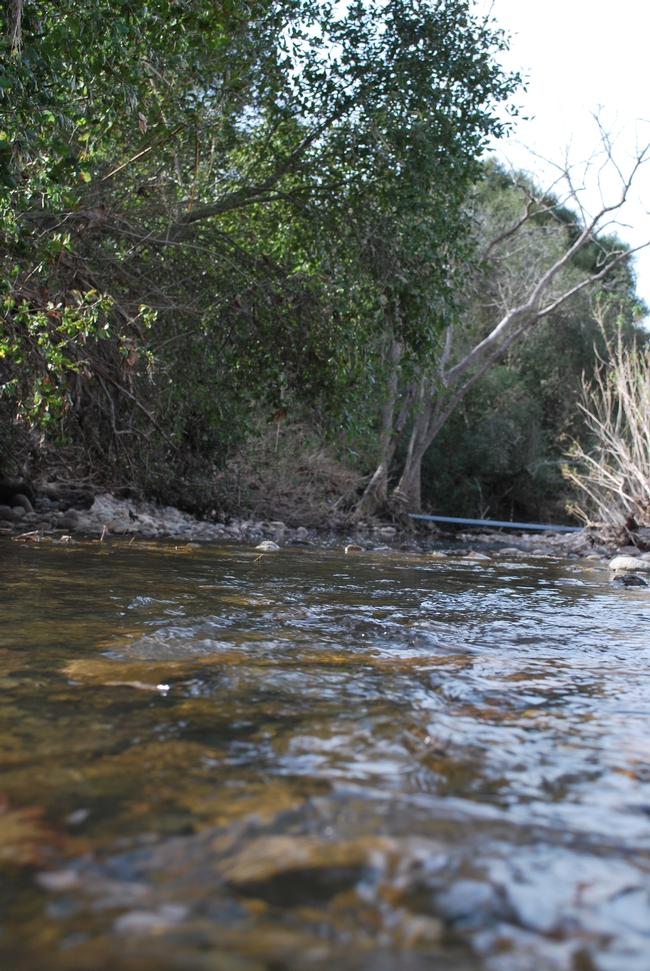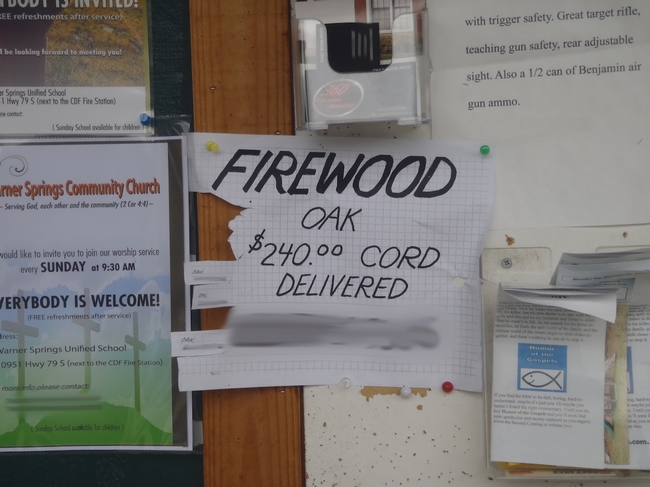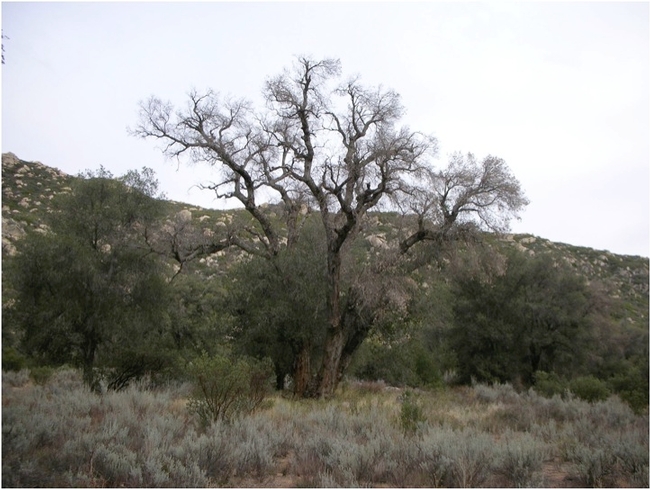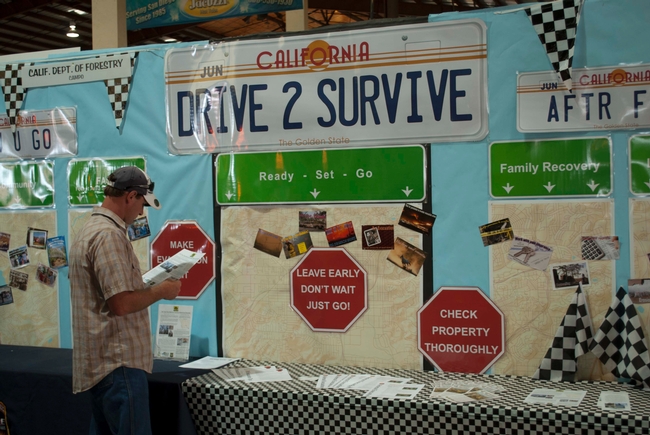
- Author: Mary Louise Flint
First identified in California in 2004, the goldspotted oak borer (GSOB), Agrilus auroguttatus, has killed more than 24,000 oak trees in San Diego County since its arrival, probably in the late 1990s. In 2012, it was detected in Riverside County and it is expected to spread northward in the state.
The most seriously damaged oaks are those in the red oak group including coast live oak, Quercus agrifolia, and black oak, Q. kelloggi. It also infests canyon live oak, Q. chrysolepis but has not been found to kill the other native oak species in the area, the Englemann oak, Q. englemanni. So far losses have been most serious in parks and forested areas, but landscape trees are also being killed.
A new Pest Note from the UC IPM program outlines management guidelines for this serious pest. Flatheaded borers such as GSOB are difficult to manage and seriously infested trees cannot be saved. The primary way GSOB spreads into new areas is through the movement of infested wood and the authors recommend leaving infested wood on site for 2 years. If wood is to be moved, the Pest Note provides guidelines for treating it through containment, grinding, and debarking. Guidelines for replanting infested areas, less susceptible oak species, biological control, insecticide applications and developing GSOB management plans are also described.
Many other borers attack oaks but do not kill trees. GSOB infested trees can be distinguished by the characteristic D-shaped emergence holes it leaves behind. A special feature of the Pest Note is a table illustrating the emergence holes of borer species on southern California oaks. Many photos are also included.
The information in this Pest Note: Goldspotted Oak Borer is based primarily on research studies by the authors: Mary Louise Flint (UCIPM and Entomology/UC Davis), Tom Coleman and Steve Seybold (USDA/US Forest Service), and Mike Jones (Entomology/UC Davis). Find it at http://www.ipm.ucdavis.edu/PMG/PESTNOTES/pn74163.html
- Contributor: Lorin Lilikoi Lima
- Editor: Jan Gonzales
- Author: Francesca Victoria

Leaves and other organic material that fall from branches, also known as thatch, contribute to the richness of the soil beneath, allowing for healthy undergrowth. The number and density of the flora that inhabit riparian areas create a sub climate, allowing for cooler summers and warmer winters in the stream community. They also provide hiding places for the animals and a stabilizing system of roots that prevents soil erosion. These are only a handful of the benefits that oak woodlands provide for stream communities.
In San Diego County, there are five major river systems; Santa Margarita River, San Luis Rey River, San Dieguito River, San Diego River, and Sweetwater River. At varying frequency and locations, all of these rivers have oaks along their banks. Oaks may also be found along the many smaller creeks that support the watershed and riparian stream communities. The San Diego River alone has over 20 smaller creeks. These creeks are home to many animal and plant species, including the endangered Arroyo Toad, Southwestern Pond Turtle, and Bell’s Vireo. These species, along with non-endangered native species are in danger of being driven out by invasive pests.
Goldspotted oak borer (GSOB) Agrilus auroguttatus is an invasive pest contributing to the on-going oak tree mortality occurring on federal, state, private, and local Native American lands in San Diego County. Without native oak tree and native shrub cover bigger issues ensue, including harm to animals, increased risk of flood and fire, and a degradation in water quality. The loss of oak trees can directly impact a whole community of insects, fish, small mammals, and even the existence of a healthy stream.
There are federal and state environmental protection laws in place that help reduce or control the impacts of invasive species. Many counties, communities and land conservancy groups have adopted ordinances and programs to protect our environment and our watersheds from harm.
For additional information on this topic visit: http://ucanr.org/u.cfm?ids=2622, http://www.sdcwa.org/habitat-conservation, and http://ucanr.org/sites/oak_range/
- Author: Lorin Lilikoi Lima

Pests and diseases such as the Goldspotted Oak Borer, Emerald Ash Borer, and Sudden Oak Death can travel on firewood long distances, endangering previously unexposed areas, and potentially causing catastrophic die offs of trees and plants with little or no natural resistance to the intruder. As pests and diseases are often not easily identified on firewood, it is best to assume all wood is a potential risk. Choosing to buy and burn local wood is an easy solution, assuring you aren’t part of the problem. By keeping wood within its area of origin, you can be sure you are keeping any pests and pathogens already present in the area local as well.
The health of your forests, campgrounds, and your own backyards depends on you. For more information, go to the Don’t Move Firewood website at http://www.dontmovefirewood.org/.
Photo Source: Lorin Lima, UC Cooperative Extension - San Diego
- Author: Jan Gonzales


Want to volunteer? Have you seen GSOB on your property? See the GSOB website to learn more.
Photo Source: Tom Coleman, USDA Forest Service and Kim Camili, CAL FIRE
- Author: Lorin Lilikoi Lima

Photo Source: Lorin Lima, UC Cooperative Extension - San Diego

